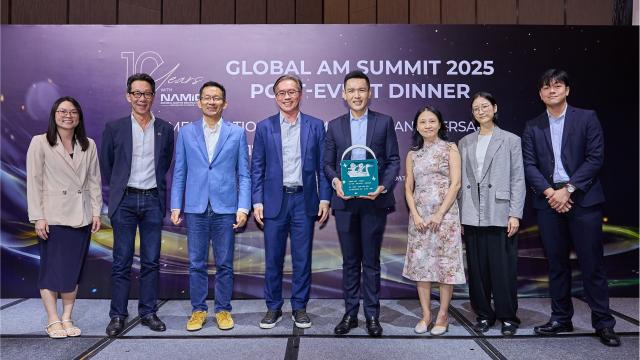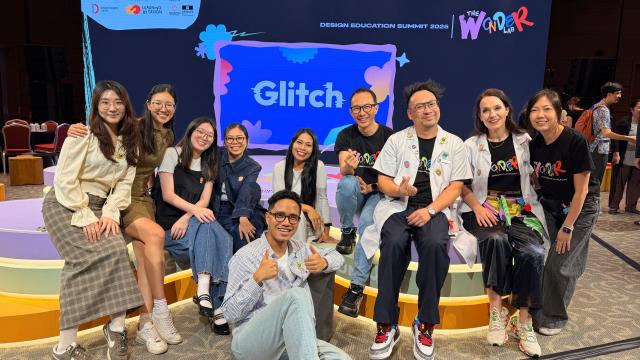Singapore’s waters will soon be plied by an all-electric harbour craft. Associate Professor Tay Zhi Yung tells us more about the Hydromover.
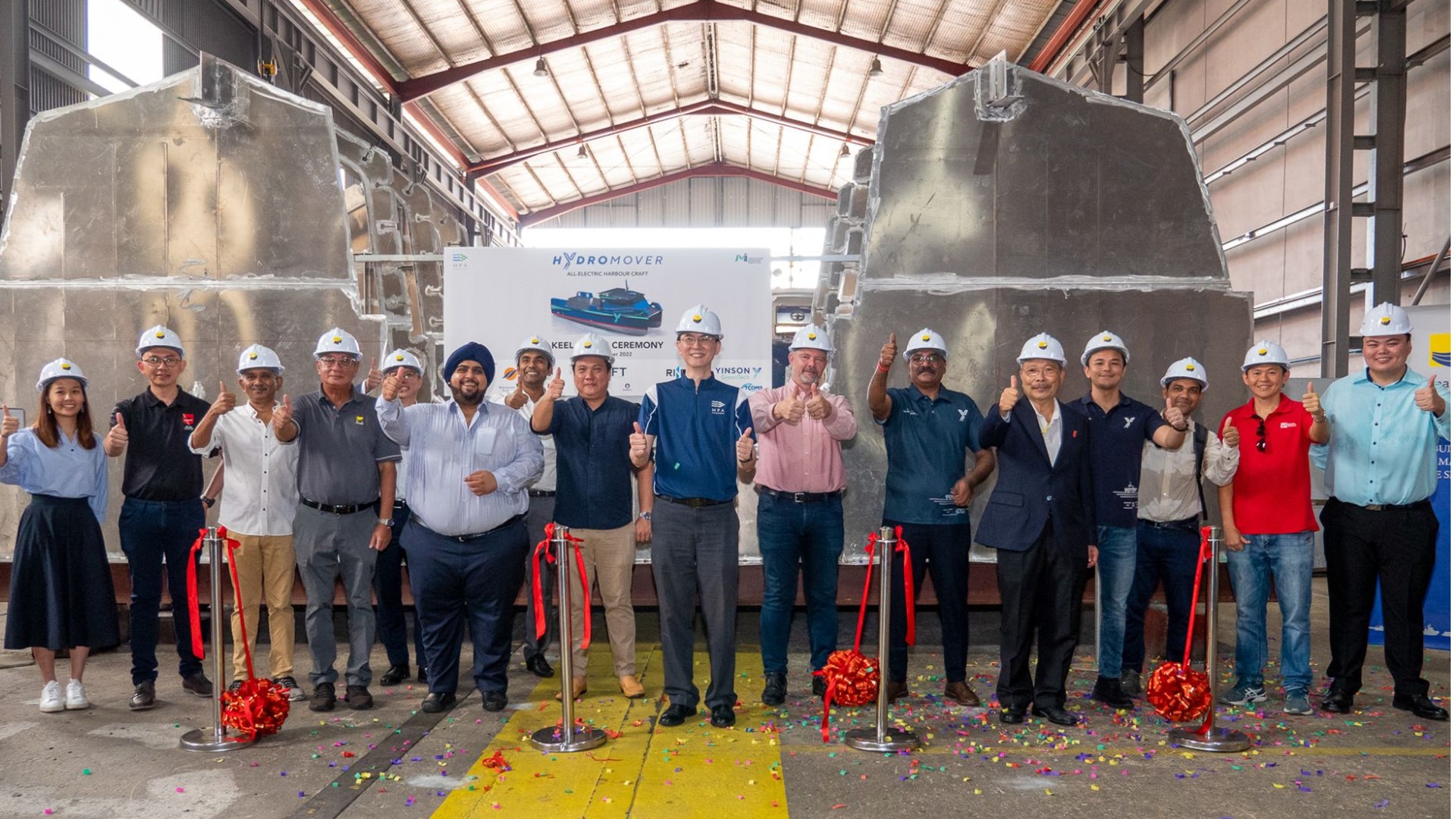
Goal Zero consortium members, including A/Prof Tay Zhi Yung (second from right) and representatives from Maritime & Port Authority of Singapore at the keel-laying ceremony of the all-electric cargo vessel, Hydromover, at Lita Ocean shipyard on 28 September 2022. (Photo: Seatech and Yinson)
A ship trawling the sea finds itself facing a huge wave head-on, cresting a short distance away. It is a rogue occurrence, but the crew onboard remains calm. Automatic calibrations, from the rate of energy consumption to ship speed, begin in the ship’s systems. As the wave approaches, the vessel rides over it smoothly.
Such a scenario is going to be a reality; and Associate Professor Tay Zhi Yung, who specialises in naval architecture and marine engineering at the Singapore Institute of Technology (SIT), is part of the team working to make it happen. For the past two years, he has been collaborating with other partners of the Goal Zero consortium, which consists of enterprises and research institutes, to build Singapore’s first fully electric harbour craft called the ‘Hydromover’. The vessel is expected to be one of the most economical and environmentally friendly options for cargo vessel crafts. It could potentially reduce fuel costs by about 77 per cent and save about 752 tonnes of greenhouse gas emissions from the atmosphere.[1]
Digital Twinning with Data
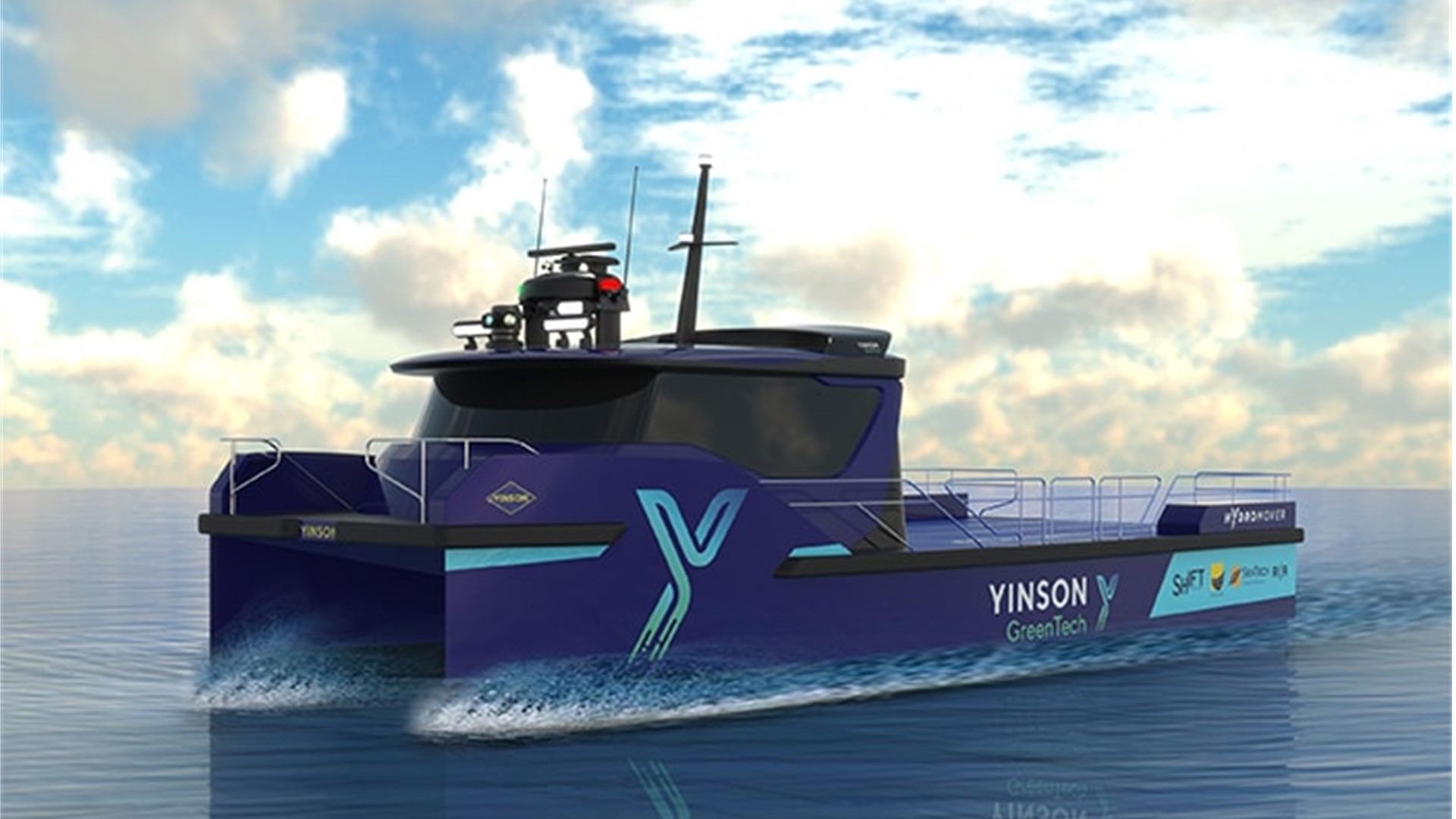
An artist’s impression of the Hydromover with battery swapping technology. (Photo: Yinson Green Technologies and SeaTech Solutions)
Beyond its all-electric power source, what makes the Hydromover unique, compared to traditional vessels, is its ability to cruise not just the real world, but also the digital one.
It has a digital twin, a virtual model of itself, which the team at SIT led by A/Prof Tay, has crafted in partnership with the Technology Centre for Offshore and Marine, Singapore (TCOMS). Theoretically, the twin will be able to numerically model, in real-time, how the Hydromover responds to extreme weather events like storm surges and thunderstorms. The digital twin could be expanded for the development of autonomous vessels, which is also part of Singapore’s vision for future-ready ports. The creation of a dynamic digital representation of the harbour craft vessels serves as highly accurate models, that can replicate the behaviour and characteristics of physical vessels. This would enable the generation of comprehensive and reliable representations of the physical environment, where the autonomous vessels can be trained to operate safely in virtual environments before being deployed in the real world.
“Now with 4G, 5G, and the Internet of Things, we can quickly link our numerical model with data we collect from ships,” said A/Prof Tay. “In that way, it becomes a digital twin – a virtual model that behaves exactly the same as the physical model.”
The benefits are clear. Apart from improving safety, a digital twin can also increase efficiency by predicting when a vessel might require maintenance. Sensors recording a vessel’s battery performance can flag anomalies, allowing maintenance personnel to respond quickly. The result is lesser downtime and longer asset life.
“Digital twins are expensive right now because sensors are costly to install on ships. Currently, there are not many harbour craft vessels with sensors installed. Data from sensors are important as they can be used to develop a high-efficacy digital twin system, and obtain the operational profile for accurate battery sizing,” said A/Prof Tay.
“When the Hydromover is operational and actual data can be collected from the sensors, we can further calibrate and optimise the digital twin system,” said A/Prof Tay.
Sailing into the Next Generation
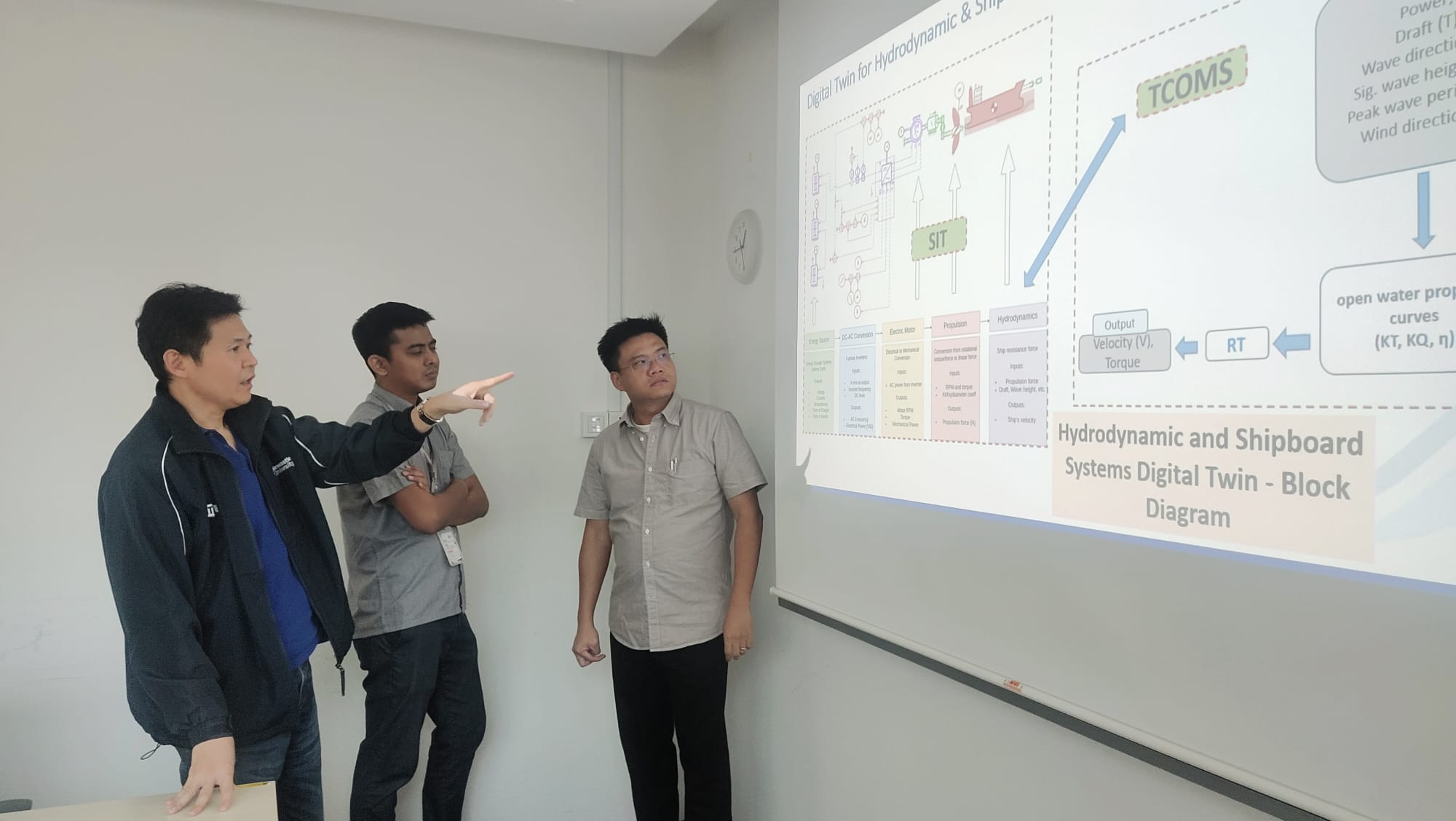
A/Prof Tay (left) in a discussion with his research team on digital twin modelling. (Photo: A/Prof Tay)
Around 1,600 harbour crafts currently operate within Singapore’s waters. Lightweight and capable of moving 25 tonnes, including batteries, the zero-emissions Hydromover will be an important addition to the shipping scene. This is especially crucial in light of decarbonisation targets set by the Maritime and Port Authority of Singapore (MPA), which stipulates that all new harbour crafts in Singapore waters must be fully electric or run on low-carbon energy solutions by 2030. Still, getting there won’t be a breeze.
The digital twin system could aid ship operators in their decision-making. “We are developing operational profiles of different harbour craft types that could be used to determine battery sizes for new-built electric vessels,” said A/Prof Tay, adding that the research findings could help in the conversion of diesel-powered crafts to electric power.
The project is currently moving into its third and last phase, with the construction of the pilot vessel already underway. It is expected to be launched by the end of 2023 and will be ready for commercialisation in the second half of 2024.
The Hydromover might be on track for completion, but whether the same can be said for the larger goal of decarbonisation is another matter. The cost of digital twinning aside, applying the technology to larger vessels may prove challenging. Big ships mean big batteries, which do not become significantly lighter as energy is consumed.
“Industry partners can engage us to analyse how ships respond to different scenarios before building their ships, without necessarily building a digital model,” noted A/Prof Tay. Ships will have to be built or modified to hit MPA’s 2030 target.
Making sure that the next generation of maritime professionals is well-acquainted with new technologies in the field is also a top priority. “Big vessels in the industry have started collecting data, but there is currently a lack of digitalisation skills in analysing these data,” he said. “To that end, SIT is working on equipping students with skills in areas like data analytics, which will be critical in the future.”
After almost a decade of working on the digitalisation of the maritime industry, he is excited by the possibilities ahead. “The digital twin could be expanded for the development of autonomous vessels, which is also part of Singapore’s vision for future-ready ports,” said A/Prof Tay. “A lot of innovation will be needed in the coming years. The challenge of how to create a more sustainable industry keeps me interested.”
[1] https://www.offshore-energy.biz/singapore-all-new-harbor-craft-will-have-to-go-electric-or-switch-to-clean-fuels-by-2030















![[FA] SIT One SITizen Alumni Initiative_Web banner_1244px x 688px.jpg](/sites/default/files/2024-12/%5BFA%5D%20%20SIT%20One%20SITizen%20Alumni%20Initiative_Web%20banner_1244px%20x%20688px.jpg)
